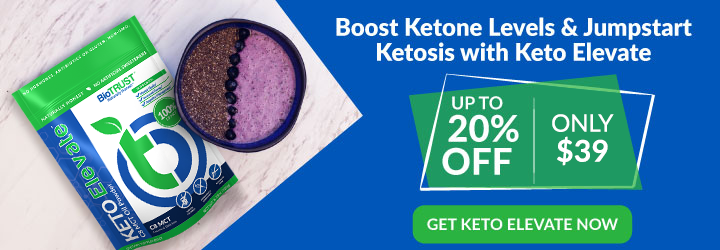9 Ways to Get More Creative with Food and Break Out of Your Food Rut

When it comes to dietary choices, many of us get stuck in a food rut. We find a few meals that go on repeat—often indefinitely. Maybe because they’re easy, a couple of go-to meals become habitual. Perhaps it’s because the foods offer comfort and convenience. It’s easier to stick with what you know rather than expand your cooking skills. Even simple new recipes can take longer to prepare than the ones you throw together regularly. Yet those same old, same old recipes may not only be boring; they may be holding you back from achieving your goals.
Why Break Out of Your Food Rut?
Breaking out of your food rut won’t just help make mealtimes more exciting. They can help you live a longer, healthier, stronger, more vibrant life as they:
- Provide greater nutrient diversity. Sticking to the same foods day in and day out can lead to nutritional imbalances. Introducing greater diversity in the foods you eat ensures you’ll get a wider variety of essential nutrients, vitamins, minerals, and antioxidants to help improve health and potentially boost metabolism.
- Support your weight-loss efforts as eating a varied diet of foods that taste good helps prevent boredom that can tempt you to choose less healthy options or overindulge in snacks and treats. Introducing new, healthy, calorie-controlled, filling, and nutrient-packed recipes can help you lose weight or maintain a healthy diet for long-term success.
- Benefit your metabolism as different foods affect how your body burns calories. For instance, eating more protein- and fiber-rich meals can keep your metabolism more active and efficient, so you burn more calories and enjoy higher energy levels.
- Stimulate your mind as well as your tastebuds as you leave your monotonous diet behind. Trying new foods and recipes can be exciting, making sticking to your healthy diet easier. Exploring new foods and cuisines can also help you find novel dishes you’ll love.
- Promote energy and vitality by providing a wide variety of nutrients, which can help you stay more active.
- Improve health as eating a varied diet has been found to help lower the risk of chronic diseases, including heart disease, diabetes, and some cancers. Eating a more nutrient-dense, varied diet can not only help you feel better now, it’s a good investment in your long-term well-being.
- Enhance connections as sharing a variety of healthy, delicious meals is a great way to spend time with others. You may even find cooking together builds stronger connections with your family, friends, and loved ones.

Getting Creative in the Kitchen
Especially if you are new to cooking or don’t have a lot of time to spend in the kitchen, getting out of your food rut can feel like an overwhelming challenge. It doesn’t have to be. While few of us will ever reach Coach Cristina’s level of creativity in the kitchen, a few simple changes can make a big difference!
Here are a few simple solutions to help you break out of your food rut:
- Plan your proteins, vegetables, or grains, choosing an array of different options. If you usually cook only chicken, toss some fish, tofu, or beans into the mix. If you tend to be a meat and potatoes type of cook, swap out the potatoes with another veg or two, such as cauliflower or sweet potatoes. If you tend to cook a lot of rice, give quinoa a try.
- Experiment with new recipes that fit into your diet. If you aren’t sure where to look, Coach Cristina has you covered. You can find simple recipes for a busy weeknight like Palmini Lasagna Soup, Mediterranean Hummus Dip, Mediterranean Tuna Salad, or Mexican Pizza to more extravagant meals for special occasions like Tandoori Chicken, Shepherd’s Pie, Tonteki (Japanese Pork Chop), or Creamy Christmas Chicken. So many amazing recipes, so little time!
- Trade out old snacks, such as the traditional chips, crackers, candy bars, and cookies, with more filling and nutrient-dense options like Greek yogurt with fresh (or frozen) berries and nuts, sliced veggies with hummus or dip, or a smoothie or smoothie bowl.
- Spice it up by adding a variety of herbs and spices, which can enhance the flavor of your meal without adding excess calories. Even a familiar dish can be transformed into something exciting and new. Plus, many spices, such as chili peppers, cinnamon, and cumin, can help support a stronger metabolism! You can also adjust sauces and dressings with different herbs and spices to keep the changes super simple.
- Explore new cuisines, such as Mediterranean, Indian, or Japanese dishes, which provide numerous dishes rich in nutrients, fiber, and protein that are filled with thrilling flavors.
- Tweak family favorites to increase the nutrient value (e.g., by adding more veggies or herbs), decrease the carbs or calories, or boost the protein value (by adding beans, for instance). You may even find you enjoy the new pop of flavor or the texture of the food more.
- Connect with others by joining a cooking group or taking a cooking class. You can often find classes at hospitals, community centers, local community colleges, and online to learn how to improve your cooking skills and discover new techniques to make healthy eating easier, more fun, and more rewarding. Plus, it’s a great way to meet others who are interested in healthy cooking and eating.
- Seek seasonal options for protein sources and vegetables, which will provide foods at the peak of their flavor. A local farmer’s market can be a wonderful place to seek inspiration, whether you want something new every week or just once a month.
- Look for health benefits. For example, if you read an article on the health benefits of a food you haven’t tried or aren’t familiar with, see if you can add that food to next week’s menu. Maybe it’s tofu, MCT oil, quinoa, sweet potatoes, persimmons, papaya, pomegranate, or portabella mushrooms.
If you’re deep in your food rut, the above ideas may seem like too much too fast. If so, you can choose to make small changes to your favorite meals. For instance, if you tend to have tuna at lunch, slice up some carrots and celery or radishes or swap out mayo with mashed avocado.
Or if spaghetti is on the weekly rotation, swap out standard pasta for one that contains whole grains or legumes for more fiber and protein. If you often have stir-fries on the menu, swap out just one of the veggies or try a new protein source. If you make chili, try using a differ type of beans or a combination of beans.
You can also change cooking methods. For example, if you usually fry or bake, try grilling, broiling, slow-cooking, or air-frying. You’ll change the flavor and the texture without changing the nature of the meal.
It can also help to introduce theme nights to your weekly meal planning. Some of the most common are meatless Mondays, taco Tuesdays, fish Fridays, and soup or salad Sundays. Having themes provides a framework that makes it easy to introduce variety without too much change. It also frees you to enjoy a wide variety of options. After all, there’s more than one way to make a taco!
If you don’t love leftovers, you can repropose the ingredients. For instance, rather than reheating leftover chicken, slice it into a chicken salad for lunch. Or add your baked vegetables to a hearty soup for tomorrow’s dinner. You’ll not only create a new recipe, but you’ll reduce food waste, which saves hard-earned money.
You can also still employ batch cooking as that can save time and effort. Just batch-cook the most versatile ingredients, such as quinoa, brown rice, roasted vegetables, baked chicken, or grilled meats, and then use different spices, sauces, or add-ins throughout the week to increase the variety.
Embrace Culinary Creativity for a Stronger, Healthier Life
Falling into a food rut is so easy. Yet breaking free is an essential step toward a healthier, more vibrant life. It’s true. Variety isn’t just the spice of life; it’s the secret to a balanced, nutrient-rich diet. And by adding new foods and flavors to our meals, we not only enrich our experiences with foods but also help support health by increasing the intake of nutrients, supporting weight loss and management, and promoting an efficient metabolism.
Getting out of a food rut doesn’t require a radical overall or eliminating foods that bring you comfort. It’s more often about making small, simple tweaks. Remember, food isn’t just fuel. It’s a source of joy. It helps us express ourselves creatively. And it helps us connect with each other and the world around us.
As we enter the New Year, step out of your comfort zone and break free from your food rut, even if it’s just a little, to discover the delicious possibilities that healthy foods have to offer. Your body, mind, and, yes, tastebuds will thank you!






